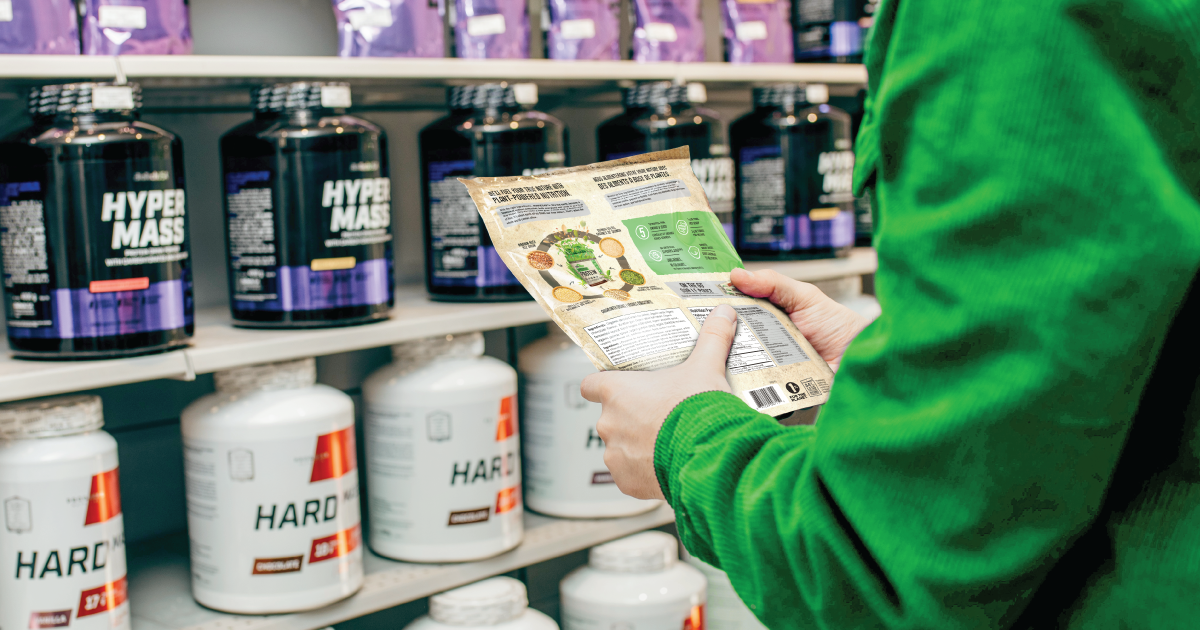Written by Iron Vegan
A healthy plant-based diet is centered around eating whole plant-based foods. It should contain a variety of fruits, vegetables, proteins, healthy fats, and whole grains. Foods like nuts, seeds, legumes, soy products, and nutritional yeast are all great sources of protein. Avocadoes, coconut oil, and olive oil are nutritious choices for healthy fats. Fruits, veggies, and whole grains will account for your clean carbohydrates.
Below is a sample shopping list to help get you started!
For any packaged or canned foods, look closely at the ingredient list and always opt for the all-natural, preservative free option. Most supermarkets and grocery stores will carry a variety of wholesome plant-based foods, especially in the produce and natural section, but you may need to make a trip to your local health food store for the best selection.
Plant-Based Grocery List
- Vegetables: asparagus, bell peppers, broccoli, brussels sprouts, cabbage, carrots, cauliflower, cucumber, eggplant, garlic, green beans, kale, onions, sweet potatoes, spinach, squash, tomatoes, zucchini
- Fruits: avocadoes, apples, bananas, blueberries, raspberries, grapes, grapefruit, lemons, limes, kiwis, oranges, peaches, pears, pomegranates, strawberries, mangoes, watermelon
- Frozen produce: many of the above veggies + fruits can be purchased frozen instead. Frozen fruit and veggies make excellent additions to smoothies, and they last for months in the freezer
- Non-dairy milk: almond milk, coconut milk, cashew milk, oat milk, rice milk (opt for the unsweetened version)
- Nuts: almonds, walnuts, cashews, hazelnuts, brazil nuts, pecans
- Nut Butters: Almond butter, cashew butter, pumpkin seed butter, sunflower seed butter, peanut butter (ensure that there are no additives, i.e., that it’s 100% natural nut butter)
- Seeds and seed butter: chia, sunflower, pumpkin, hemp, flax, sesame, poppy, sesame paste (tahini)
- Soy: tempeh, tofu (opt for organic non-GMO soy products whenever possible)
- Oils: coconut, olive, sesame, and grapeseed will be the healthiest choices (use coconut oil when cooking, as it remains stable at high heat)
- Whole grains: quinoa, rolled oats, millet, amaranth, brown rice
- Flours: almond, coconut, quinoa, millet, brown rice flour, all-purpose gluten-free flour
- Condiments: apple cider vinegar, tamari (gluten-free soy sauce), rice vinegar, red wine vinegar, mustard
- Fermented foods: kimchi, sauerkraut, kombucha
- Dried/canned beans: black beans, chickpeas, lentils, kidney beans, white beans
- Dried goods: rice paper, rice/konjac noodles, dehydrated fruit, rice, cacao nibs, sea veggies (dulse, wakame, nori), coconut flakes
- Other: coconut cream, pumpkin puree, dark chocolate, crackers, cocoa powder
- Spices: cinnamon, cayenne pepper, chili powder, cumin, garlic powder, ground ginger, paprika, basil, black pepper, rosemary, thyme, turmeric, sea salt
Protein:
Other than protein powder, ensure you consume a wide range of the following foods that are high in protein. Some examples are:
- Nuts: almonds, Brazil nuts, cashews, hazelnuts, macadamia nuts, peanuts, pecans, pistachios, walnuts
- Seeds: chia seeds, flax seeds, hemp seeds, pumpkin seeds, sesame seeds, sunflower seeds
- Legumes: black beans, chickpeas, kidney beans, lentils, navy beans, pinto beans
- Non-GMO organic soy products: tempeh, tofu
Kitchen Appliances and Gadgets to Consider
When it comes to preparing your meals, there are some kitchen appliances and gadgets that can certainly help make the transition to plant-based eating easier and more exciting. In order of versatility and importance:
- High-speed blender: this will be your go-to for smoothies, soups, dressings and even pancake batters
- Food processor: comes in handy for homemade dips and sauces, nut butters, energy bites
- Mixer: great for making batters, like muffin, brownie, cake or cookie batter
- Spiralizer: a simple and relatively inexpensive tool in the kitchen that will transform your veggies into raw spiral noodles (or even to cut fruit into beautiful spirals, as well)
You may already be well stocked with a fridge or pantry full of based-based ingredients, so simply use this as a guide and build on what you already have. Happy plant-based cooking and baking!








